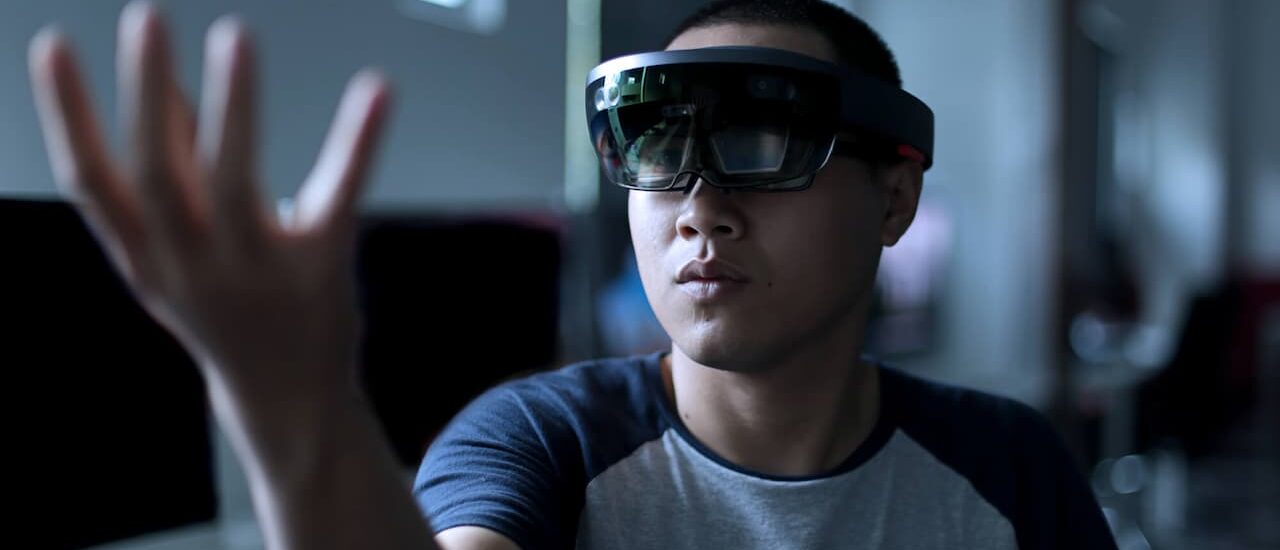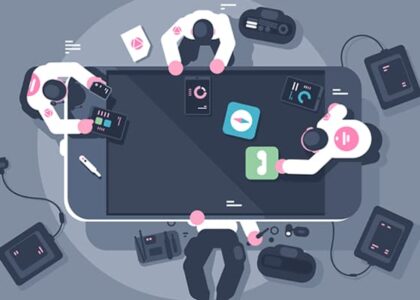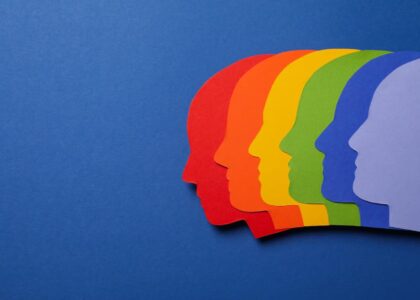Introduction: Exploring Real-World Applications in High School Product Design Projects
Welcome to the exciting world of high school product design projects! In this guide, we will delve into the importance of real-world applications and how they enable students to solve actual problems through their designs.
Product design is not just about creating something aesthetically pleasing; it’s about using creativity and critical thinking skills to develop solutions that positively impact our lives. By engaging in real-world applications, students have the opportunity to make a tangible difference and see the direct results of their efforts.
Why is focusing on real-world applications so essential? Simply put, it allows students to apply their knowledge and skills to scenarios they encounter beyond the classroom walls. It encourages exploration and problem-solving capabilities, giving rise to innovative solutions that have practical and significant implications.
By incorporating real-world problems into product design projects, students are exposed to challenges that mirror those faced by designers and engineers in various industries. This experience prepares them for future professional endeavors and broadens their understanding of the world around them.
Real-world applications expose students to the importance of collaboration, effective communication, and project management — skills that are essential in any workplace setting. They also help students gain a deeper appreciation for multidisciplinary approaches, as design challenges often require knowledge from areas such as engineering, art, and science.
In addition, solving real-world problems through product design fosters a sense of purpose and empowers students to become agents of positive change. It inspires them to think beyond themselves and consider the wider impact their creations can have on society.
The International Baccalaureate Internal Assessment is an integral part of the IB curriculum, offering students a unique opportunity to dive deep into subjects they are passionate about. In courses like Design Technology, the IA allows students to experience the complete cycle of product design, from conceptualization to execution. This includes researching existing solutions, identifying gaps or opportunities, ideating, prototyping, and ultimately producing a functional design. The focus is not only on the final product but also on the journey that led to its creation, documenting each step to provide a comprehensive understanding of the design process.
Given the demanding nature of the IB program, the IA process can be overwhelming for students. Juggling regular coursework, extracurricular activities, and the rigors of the IA can lead to high stress and anxiety levels. During these challenging times, students can opt for external support like the IB IA Writing Service. This service offers specialized assistance in crafting well-researched, coherent, and impactful assessments. Whether you need help in formulating your research question, gathering data, or putting together a compelling write-up, expert guidance can be invaluable. Utilizing such services can ease the stress during the overwhelming period of IB Internal Assessment submissions, allowing students to focus on delivering their best work.
We invite you to join us on this educational journey, where we explore the fascinating intersection between problem-solving, creativity, and real-world applications in high school product design projects. Together, we will learn practical tips and strategies that will empower you to tackle real problems and make a meaningful difference through your designs.
The Importance of Problem-Solving in Product Design
In the world of product design, problem-solving skills are like superpowers. They give designers the ability to identify real-world problems and create innovative solutions that make a difference in people’s lives. Whether it’s addressing a specific need or improving an existing product, problem-solving plays a vital role in shaping the success and impact of high school product design projects.
When students develop problem-solving skills through product design, they gain a valuable toolset that goes far beyond the classroom. These skills are applicable in various real-life situations, including personal and professional contexts.
One key aspect of problem-solving is encouraging students to think critically and analytically. By challenging them to tackle complex problems, high school product design projects teach students to break down challenges into manageable steps. This approach lays the foundation for logical thinking, ensuring that students consider all aspects of a problem before jumping into designing a solution.
Another crucial aspect is fostering creativity. As students encounter real-world problems, they expand their imagination and come up with unique ideas that have the potential to revolutionize industries or solve pressing issues. Product design allows them to explore various perspectives and encourages them to consider unconventional approaches to problem-solving.
By focusing on problem-solving in product design, students also experience firsthand the iterative nature of design. They learn that failure is not something to fear but rather an opportunity to learn and improve. When their initial solutions fall short, they are taught to review their designs, iterate, and try again until they find the optimal solution. This skill of embracing failure and persistence directly translates into resilience and adaptability – qualities that are highly sought after in the professional world.
Moreover, developing problem-solving skills within product design helps students become confident in their abilities to face the unknown. It equips them with a mindset to analyze challenges, develop strategies, and take action when confronted with real-life problems. This confidence extends beyond the boundaries of the classroom, instilling within students a belief that they are capable of making a meaningful impact in the world.
Ultimately, problem-solving is not just about creating ingenious designs; it’s about empowering students to envision a better, problem-free future. As students engage in these real-world product design projects, they become agents of change, developing critical skills that will benefit them both academically and professionally.
Selecting a Project Topic: Addressing Real-World Problems
Choosing the right project topic is a crucial step in high school product design projects as it determines the real-world problem that students will be focusing on. It is important to select a topic that not only sparks interest but also has relevance and meaning in the world around us.
- Identify your passions and interests: Think about the issues or areas that you feel strongly about. Is there a problem that you would like to solve? Consider topics such as sustainability, accessibility, health, or technology, and explore how you can apply them to product design.
- Research current problems: Look beyond your immediate surroundings and dive into diverse communities, industries, and global trends. Look for pressing problems or challenges that need innovative solutions.
- Consider feasibility: Reflect on the resources, time, and expertise available to you. Choose a problem that you realistically have the ability to solve within the given constraints.
- Be curious and ask questions: Develop a habit of asking thoughtful questions that challenge assumptions and inspire creative thinking. Consider the “”Why”” and “”What if”” as you explore potential project ideas.
- Seek input from others: Discuss your project ideas with friends, teachers, mentors, or professionals in relevant fields. They may offer valuable insights, suggestions, or help you refine your topic.
Remember, the goal is to select a project topic that is both meaningful and achievable. By addressing real-world problems, students can gain a deeper understanding of the challenges they might face as future designers and innovators. This process also encourages critical thinking and creativity as students strive to develop effective solutions.
Choosing the right project topic sets the foundation for a successful and impactful design journey. It enables students to focus their energy on developing innovative product designs with tangible benefits for society.
Research and analysis: Guide students on conducting thorough research and analysis to understand the chosen problem, its scope, and potential solutions.
Research and analysis are crucial steps in high school product design projects as they help students gain a deeper understanding of the problem they aim to solve. By conducting thorough research, students can explore the various factors surrounding the problem and identify potential solutions that address them effectively.
When embarking on a product design project, it is essential for students to clearly define the problem statement. By defining the problem, students can focus their research efforts and ensure they are addressing a real-world issue. Students should consider gathering data from various sources such as books, articles, interviews, surveys, and online resources to get a comprehensive understanding of the problem at hand.
Once armed with research findings, students can then analyze the data to identify patterns and trends. This analysis will help determine the scope of the problem and provide insights into what aspects need to be considered when developing a product design. For example, if researching a problem related to reducing water consumption, students may discover that household water wastage and inefficient irrigation systems are significant contributing factors.
- Tips for conducting research:
- Consider multiple perspectives: Conduct research from various angles to gain a well-rounded understanding of the problem.
- Look for existing solutions: Explore existing products or designs that have addressed a similar problem to gather inspiration and learn from their success or failure.
- Tips for analysis:
- Identify patterns and trends: Look for commonalities among the research findings to uncover key insights and themes.
- Consider the limitations: Recognize any constraints or challenges that may impact the potential solutions.
By undertaking thorough research and analysis, students can lay a strong foundation for their product design project. This knowledge will guide their decision-making process, ensuring that the solutions they propose are grounded in a deep understanding of the problem and its scope. Additionally, students will gain valuable insights that can spark creativity and inspire innovative approaches to solve real-world problems effectively.
Ideation and Brainstorming: Generating Innovative Ideas for Unique Product Designs
One of the most exciting stages in high school product design projects is ideation and brainstorming. During this phase, students have the opportunity to let their creativity flow and come up with unique ideas that can solve real-world problems. By following a few effective techniques, students can generate innovative ideas that will set their product designs apart.
1. Encourage open-mindedness: It’s important for students to have an open mind and be willing to explore different possibilities. Emphasize that there are no wrong answers during ideation and encourage them to think outside the box.
2. Foster collaboration: Collaborative brainstorming sessions can lead to more diverse and rich ideas. Students should work together in pairs or small groups to bounce ideas off one another and build upon each other’s thoughts.
3. Start with problem identification: To generate meaningful ideas, students should begin by clearly understanding the problem they are trying to solve. Encourage them to conduct research, gather insights, and identify pain points or challenges associated with the problem.
4. Divergent and convergent thinking: Begin with divergent thinking, where students aim to generate as many ideas as possible without judgment or evaluation. This can be achieved through brainstorming techniques such as mind mapping or random word association. Afterward, guide students in transitioning to convergent thinking, a process of evaluating and refining the generated ideas to select those with the most potential.
5. Draw inspiration from different sources: Encourage students to seek inspiration from various sources, such as nature, technology, art, or existing products. By looking beyond their immediate surroundings, they can find new perspectives that spark innovative ideas.
6. Emphasize user needs: Students should always keep the end-user in mind during the brainstorming process. Encourage them to empathize with their target audience or potential customers and think about how their product designs can effectively meet their needs.
7. Embrace failure and iteration: Remind students that not every idea will be perfect, and that failure is an essential part of the ideation process. Encourage them to iterate and make improvements based on feedback and testing results to refine their designs.
Ideation and brainstorming are crucial steps in high school product design projects as they lay the foundation for creating impactful and unique solutions. By fostering creativity, collaboration, and a deep understanding of the problem at hand, students can generate innovative ideas that have the potential to change the world.
Concept Development: Turning Ideas into Concrete Solutions
Once students have generated a range of innovative ideas during the ideation and brainstorming phase, it is time to transform those ideas into tangible concepts that address real-world problems. This crucial step in the product design process involves carefully considering key factors such as feasibility, usability, and market demand.
Feasibility:
- Students must evaluate whether their ideas can become reality.
- By considering available resources, materials, and technology, they can determine if their concept is realistic given the constraints.
- In this stage, it is essential to analyze potential roadblocks, such as technical limitations or legal regulations, preventing successful implementation.
Usability:
- Designers need to ensure that their product serves its intended purpose effectively and efficiently.
- They should consider the target audience and their specific needs, preferences, and limitations.
- By conducting user research and testing, designers can gather valuable insights and adapt their concept to maximize usability.
Market Demand:
- It is crucial for students to consider the commercial viability of their product.
- They must research the target market, analyze similar existing products, and identify gaps and opportunities.
- Creating something unique and offering a distinct advantage over competitors will increase the chances of success.
By taking these factors into account, students can refine their ideas to create concepts that not only tackle real problems but also have a higher chance of practical application and success in the market.
Tips for Students:
Encourage students to have an open mind and embrace feedback during the concept development stage. Iteratively refining their ideas based on input from peers, teachers, and industry professionals allows them to create stronger concepts.
Furthermore, by incorporating creativity and innovative thinking, students can push boundaries and find unconventional solutions that provide distinct advantages over existing products. They should consider different perspectives, challenge assumptions, and think outside the box.
During concept development, students should keep their target audience in mind and design with empathy. By understanding the problems firsthand, they can develop user-centric solutions that truly address the needs and wants of the users.
Remember, concept development is not an isolated step but an ongoing process influenced by continuous feedback and refinement. By considering feasibility, usability, and market demand, students can transform their initial ideas into valuable, impactful, and market-ready products.
Prototyping: Creating prototypes to bring ideas to life
One of the most exciting parts of product design projects is the prototyping stage. Prototypes help students transform their ideas into tangible forms, allowing them to test and refine their designs. In this section, we will provide step-by-step instructions on creating prototypes using various materials and techniques, highlighting the importance of accurate measurements and attention to detail.
1. Materials: Start by gathering all the necessary materials for your prototype. These may include cardboard, foam, wood, or even 3D-printed parts. Assess the needs of your design and choose the materials that will best replicate your product.
2. Measurements and Precision: Accurate measurements are crucial when creating prototypes. Use rulers, calipers, or measuring tapes to ensure precise dimensions. Ensure that all components are properly aligned and secured, paying attention to details that contribute to functionality and aesthetics.
3. Tools and Techniques: Depending on your chosen materials, select the appropriate tools and techniques for constructing your prototype. This might involve cutting, carving, bending, soldering, or 3D printing. Also, consider using adhesives, such as glue or tape, to assemble the different parts of your design.
4. Step-by-step assembly: Break down the assembly process into smaller steps. This helps ensure that each component is properly fit and functional. Follow a logical order and take your time to accurately position and secure each component. Remember, attention to detail is key!
5. Testing: Once your prototype is assembled, put it to the test! Evaluate its usability, durability, and functionality, considering how well it solves the real-world problem you aimed to address. Note any necessary improvements or adjustments to make your design even better.
Prototyping allows students to experience firsthand the satisfaction of seeing their ideas come to life. By following these steps and paying attention to measurements and detail, students gain valuable insights into the practical feasibility of their designs. True learning happens when ideas are realized and successfully function in the real world.
Through prototyping, not only do students enhance their product design skills, but they also develop a strong sense of perseverance and problem-solving. Every iteration brings new challenges and opportunities for improvement. The growth mindset cultivated during this process stays with students long after the project is completed. So embrace the prototyping stage and bring your visions to life!
Testing and Evaluation in High School Product Design Projects
In high school product design projects, testing and evaluation play a crucial role in ensuring the functionality, aesthetics, and overall user experience of the designed products. Testing products in real-life scenarios helps students identify any flaws or improvements that need to be made, ensuring that the final design meets the needs and expectations of the intended users.
- Functionality: Testing a product’s functionality involves assessing how well it performs its intended tasks. This can be done by simulating real-life situations or by engaging potential users for feedback. Evaluating functionality allows students to identify any issues or inefficiencies and make necessary adjustments to enhance the performance of their designs.
- Aesthetics: Aesthetics play an important role in product design, as they directly impact the user’s perception and emotional connection to the product. Testing the aesthetics involves evaluating the visual appeal, harmony, and the overall impression created by the design. Feedback on aesthetics can be gathered through surveys or focus groups, allowing students to refine the visual aspects of their products.
- User Experience: The user experience (UX) is a vital aspect of product design. To assess the UX, students can conduct usability tests where users interact with the prototype or final product. This feedback provides insights into the ease of use, comfort, and satisfaction of the user. By incorporating feedback into their designs, student designers can create products that address the specific needs and preferences of the target audience.
Incorporating feedback and making improvements based on the testing and evaluation process is an integral part of product design. Students need to be open to constructive criticism and willing to iterate their designs to achieve optimal outcomes.
Methods for gathering feedback and incorporating improvements can include surveys, focus groups, usability tests, and iterative design processes. These methods allow students to gather data from potential users, analyze the collected information, and make informed design decisions that improve their products.
Throughout the testing and evaluation stage, it is important for students to document their observations, findings, and any significant design changes made. This documentation provides valuable evidence for the effectiveness of their designs and facilitates communication during the presentation of their projects.
Ultimately, testing and evaluating products in real-life scenarios ensure that student designers develop critical thinking skills, enhance their problem-solving abilities, and create solutions that meet the needs of both end-users and broader applications in the real world.
Documentation and Presentation
One of the essential aspects of high school product design projects is effectively documenting the design process and preparing for a persuasive presentation. This not only helps students showcase their ideas but also allows them to reflect on their progress and communicate their solutions clearly. Here are some tips to guide students in this crucial step:
- Documenting the design process: Encourage students to maintain a comprehensive record of their project from start to finish. This can include sketches, calculations, and modeling. By documenting each step, students will have a clear reference of what worked and what didn’t, helping them learn from their experiences and make improvements.
- Organizing and labeling: Emphasize the importance of keeping all documentation organized and labeled appropriately. Students should ensure all their sketches, calculations, and models are clearly labeled with dates and descriptions. By doing so, it will be easier to navigate their work and refer back to specific stages of the project during later presentations and discussions.
- Utilizing technology: Introduce students to suitable digital tools that can aid in documenting their design processes. Tools such as digital sketching platforms, 3D modeling software, and collaboration apps can enhance the organization and presentation of their work. Encourage them to explore these tools while keeping in mind the importance of clear and legible documentation.
Preparing for a persuasive presentation: In addition to documentation, it is crucial for students to effectively present and communicate their designs in a persuasive manner. Here’s how they can do this:
- Create a clear and concise presentation: Guide students in developing a presentation that effectively communicates their design concept, goals, and solutions. They should prioritize simplicity and clarity, ensuring their ideas are easily understood by their audience.
- Practice presenting: Encourage students to practice their presentations ahead of time to boost their confidence and improve their delivery. They should focus on speaking clearly, maintaining eye contact, and utilizing visuals effectively to support their ideas.
- Address questions and feedback: Students should be prepared to handle questions and feedback from their audience during the presentation. Teach them strategies for listening actively, understanding the concerns raised, and responding thoughtfully.
By helping students develop these skills in documenting and presenting their design processes, they will be better equipped to persuade others of their ideas and make a positive impact with their high school product design projects.
Cost Analysis and Budgeting: Understanding the Financial Implications in Product Design Projects
When embarking on a high school product design project, it’s essential to consider the financial aspects involved. Cost analysis and budgeting play a critical role in helping students understand the financial implications of their designs. By introducing these concepts early on, students can develop a holistic approach to their projects and ensure they are both practical and feasible.
Cost analysis refers to the process of estimating and evaluating the expenses associated with a particular design project. It involves identifying all the materials, equipment, and resources required for implementation. By conducting a comprehensive cost analysis, students can gain insight into the financial resources needed to turn their ideas into reality.
Budgeting, on the other hand, is the process of allocating resources and creating a financial plan for the project. It helps students organize their expenditures and ensure that they stay within set constraints. By emphasizing the importance of budgeting, students learn to make informed decisions and optimize their use of resources to deliver successful design solutions.
- Create a detailed inventory: Start by listing all the necessary components, materials, and equipment needed for your product. Break down the items into specific categories, such as electronics, raw materials, or manufacturing tools.
- Obtain price quotations: Research the market to gather accurate cost estimates for each item on your inventory. Compare prices from multiple suppliers to find the most cost-effective options without compromising quality.
- Consider additional expenses: Don’t forget to account for additional costs like shipping, packaging, and any outsourcing services that may be required. These expenses can significantly impact your overall budget.
- Define project scope: Clearly outline the scope of your project to identify any potential challenges or dependencies that could impact the cost. Consider factors such as complexity, production volume, and customization.
- Allocate resources: Once you have estimated all the expenses, create a detailed budget plan. Allocate funds to different aspects of the project, such as material acquisition, manufacturing, and marketing.
By introducing cost analysis and budgeting early in the design process, students gain a practical understanding of financial responsibility. They learn to weigh the implications of their design choices and make informed decisions based on realistic constraints. In addition, this knowledge prepares students for real-world scenarios where budgets and financial considerations are vital for success.
Social impact: Encouraging positive change through product design
In addition to addressing real-world problems, high school product design projects also provide a unique opportunity for students to make a positive impact on society. By exploring concepts like sustainability, accessibility, and inclusivity, students can create designs that not only solve problems but also contribute to a better and more equitable world.
- Sustainability: Encourage students to think about the environmental impact of their product designs. They can explore ways to reduce waste, use renewable materials, or implement energy-efficient features. By promoting sustainability, students can play an active role in combating climate change and building a more sustainable future.
- Accessibility: Students should consider designing products that are accessible to people of all abilities. This involves making their designs user-friendly and inclusive for individuals with disabilities. By focusing on accessibility, students can help create a more inclusive society where everyone can equally benefit from innovative products.
- Inclusivity: Encourage students to think about how their product designs can promote inclusivity and diversity. They can consider designing products that cater to different cultural backgrounds or address the needs of marginalized communities. By fostering inclusivity, students can contribute to bridging societal gaps and ensuring that no one feels left out or overlooked.
This exploration of social impact helps students understand the broader implications of their work and cultivates a sense of responsibility towards creating positive change. It also nurtures empathy by encouraging students to understand the needs and challenges of different individuals and communities.
By discussing these social impact concepts, students not only expand their design skills but also develop critical thinking and problem-solving abilities. They learn to consider multiple perspectives, anticipate potential challenges, and create innovative solutions that benefit a larger community.
Through their product designs, high school students have the power to make a real difference in the world. By emphasizing social impact, educators can inspire students to view their projects as valuable contributions towards building a better society.
Case Studies and Success Stories:
As we conclude this guide, we want to highlight the inspiring real-life case studies of high school product design projects that have successfully solved actual problems. These stories celebrate the accomplishments of students while motivating others to think creatively and tackle real-world issues through design.
- Student-Solved Medical Device:
In one remarkable case, a group of high school students developed a low-cost prosthetic limb for individuals in underserved communities. By conducting detailed research and analysis, these students identified the various challenges faced by people in those communities. With their resourcefulness and creativity, they designed a prosthetic limb that was affordable, functional, and easy to manufacture locally, ensuring it would be accessible to those who needed it most.
- Environmentally Friendly Packaging:
Another inspiring example comes from a team of high school students who recognized the growing need for sustainable packaging solutions. Realizing the environmental impact of plastic waste, they developed a biodegradable packaging material made from natural fibers and plant-based polymers. Their innovative and eco-friendly packaging solution captured the attention of local businesses, leading to its implementation and a reduced carbon footprint.
- Accessible Home Modifications:
In yet another remarkable project, a group of high school students focused on designing home modifications for individuals with disabilities. Through extensive research and by consulting with experts in the field, they identified common barriers faced by people with mobility or sensory impairments. The students then created a series of affordable and practical solutions, including accessible ramps, tactile markers, and adjustable fixtures, ensuring that individuals with disabilities could lead independent and fulfilling lives.
The above case studies are just a glimpse of the incredible potential high school students have when they apply their problem-solving and design skills to real-world challenges. These success stories stand as shining examples of the positive impact students can make in their communities and beyond through product design projects.
We hope these case studies and success stories leave you inspired and motivated to embark on your own high school product design project. Remember, the key to success lies in selecting a meaningful problem, conducting thorough research, employing innovative ideas, and refining your designs through prototyping and testing. By persevering through challenges and seeking feedback, you have the power to create products that address real-world issues while leaving a lasting impact.
Introduction: Importance of Real-World Applications in High School Product Design Projects
In high school product design projects, focusing on real-world applications is crucial as it allows students to solve actual problems and gain practical skills. This approach empowers students to create meaningful projects that have a tangible impact in their communities.
Engaging students with real-world applications helps them understand the relevance and purpose behind their designs, making their learning experience more meaningful. By addressing genuine problems, students learn to think critically and creatively while developing necessary problem-solving skills.
Incorporating real-life scenarios into product design projects not only enhances students’ learning but also prepares them for future challenges in their careers or college. These projects teach crucial skills such as research, analysis, critical thinking, and collaboration that are highly valued by employers and academic institutions alike.
- Real-world applications also promote interdisciplinary learning as students have the opportunity to delve into various subjects, such as science, engineering, economics, and social sciences, emphasizing the multifaceted nature of product design.
- By solving actual problems, students gain a sense of purpose and foster a mindset of innovation and problem-solving that goes beyond classroom walls.
This guide aims to emphasize the importance of integrating real-world applications into high school product design projects and provide students with strategies and tools to design meaningful solutions to genuine problems. Through hands-on experiences and exposure to real-life scenarios, students develop invaluable skills and gain confidence in their abilities to make a positive impact on the world around them.





